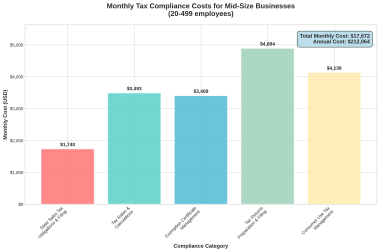The online business is booming, and digital products are a hot commodity! Maybe you’ve created a fantastic ebook or a course filled with valuable knowledge. But with so many options out there, how do you turn your creations into cash? Don’t worry; this guide will walk you through everything you need to know about selling digital products online in 2024.
We’ll help you find the perfect platform to showcase your products. Choosing the right digital product to sell, and creating a smooth and secure buying experience for your customers. So, grab your favorite device, buckle up, and get ready to turn your digital dreams into reality!
What is a Digital Product?
Imagine a product you can’t hold in your hands, but it can still be useful! That’s a digital product. These are items created and delivered electronically, meaning you download them instead of getting a box in the mail.
Think of all the cool stuff you can get online: ebooks full of exciting stories, online courses that teach you new skills, or even cool graphics. These are all examples of digital products!
So, how are digital products different from things you buy at a store? Here’s the neat part: you can buy a digital product once and use it over and over again. Plus, there’s no need to worry about running out of stock – there’s always enough for everyone!
Now that you know what digital products are, get ready to explore the exciting world of creating and selling them online!
Why Should You Sell Digital Products?
There are several reasons why selling digital products can be a great business decision:
- Flexibility: Since digital products don’t need physical inventory. You can update or create new products whenever you want. No more worrying about having enough stock or managing boxes in a warehouse!
- Low Costs: Digital products are much cheaper to sell than physical products. You don’t have to worry about costs like packaging, shipping, or storing inventory. This means you can keep more of the profit for yourself!
- Efficiency: Selling digital products saves you time and effort. There’s no need to package or ship anything, so you can focus on creating and marketing your products.
- Scalability: With digital products, you can sell to as many people as you want without having to worry about running out of stock. You can create a product once and sell it over and over again!
How to Sell Digital Products Online: Step-by-Step Guide
Step 1: Identify Your Digital Product Niche
Selecting the right niche is crucial when learning how to sell digital products. A well-defined niche helps you stand out in a crowded market. Start by conducting market research to understand what digital products to sell. Look for gaps in the market where your product can offer unique value. Analyze competitors to see what they are doing well and where they fall short. This analysis helps you refine your product idea and find ways to differentiate yourself.
Step 2: Create High-Quality Digital Products
Creating high-quality digital products is essential for success. Begin by outlining the product’s content or features. Use appropriate tools and software to bring your vision to life. For example, graphic designers might use Adobe Creative Suite. While course creators might use platforms like Teachable or Udemy. Always focus on quality to ensure customer satisfaction. Test your product thoroughly to fix any issues before launch.
Step 3: Identify the Cost of Your Digital Products
Determining the right pricing for your digital products involves several steps. Start with market research to see what similar products cost. Then, use value-based pricing strategies, which consider the perceived value of your product to the customer. This method often leads to higher prices, reflecting the product’s unique benefits. Make sure your price covers production costs and allows for a reasonable profit margin.
Step 4: Set Up an Online Store
Setting up an online store is a vital step in how to sell digital products online. Choose an e-commerce platform that fits your needs. Design your storefront to be attractive and user-friendly. Upload your products with clear descriptions and images. Configure payment gateways to accept various payment methods. Platforms like Fungies offer an intuitive interface for setting up an online store with customizable templates.
Step 5: Build a Professional Online Presence
Building a professional online presence is key to attracting and retaining customers. Start with a well-designed website that showcases your products. Use social media to connect with potential customers and share valuable content. Engage in content marketing by creating blog posts, videos, or podcasts related to your niche. This approach builds credibility and drives traffic to your store.
Following these steps can help you create and sell digital products successfully. Remember to focus on quality, research, and professional presentation to stand out.
How to Find the Right Platform for Selling Digital Goods
So you’ve got amazing digital products – ebooks, templates, music, software, the list goes on! Now you’re wondering, “How do I sell digital products online?” Buckle up because we’re here to guide you through finding the perfect platform to turn your creations into cash.
Shopping Cart: Your Digital Store’s Hero
Imagine your online store without a shopping cart. Yikes! That wouldn’t be much fun for your customers, would it? A reliable shopping cart is like a superhero for managing your sales. It lets customers add multiple digital products to their “basket,” review their selections, and easily check out. This smooth process keeps customers happy and coming back for more.
Fungies Makes Selling Digital a Breeze
Fungies offers a secure shopping cart system built specifically for selling digital goodies. With Fungies, you can focus on creating awesome products – they’ll handle the checkout flow like champs.
Payment Powerhouses: Accept All the Favorites
When it comes to buying online, convenience is king. That’s why offering a variety of popular payment gateways is essential. Think of them as the different locks on your digital store’s door. The more keys (payment options) you have, the easier it is for customers to unlock their purchases.
Fungies Unlocks Smooth Transactions
Fungies understands this, which is why they support multiple payment gateways. This means your customers can use their favorite ways to pay, ensuring a smooth and secure checkout experience.
Say Goodbye to Hidden Fees: Transparency is Key
Nobody likes surprises, especially when it comes to money. So, when choosing a platform to sell digital products online, fee transparency is crucial. You want a platform that clearly spells out its pricing structure, with no hidden transaction fees to eat into your profits.
Fungies Keeps it Clear and Simple
Fungies is all about clear and transparent pricing. They don’t believe in sneaky hidden fees. This makes them a cost-effective choice for sellers, allowing you to keep more of the money you deserve. Now that’s something to sing about (or code, or write, or design – whatever your digital product may be)!
Best Digital Products to Sell Online
Online Courses and Educational Products
Online courses and educational products are in high demand. Many people want to learn new skills or improve existing ones. Creating and selling educational content can be very profitable. To start, choose a topic you know well, and that has market demand. Research popular online learning platforms to see what courses are trending.
Focus on quality. Use clear, engaging materials, and consider including videos, quizzes, and interactive elements. Platforms like Teachable and Udemy are great for hosting your courses. They help you create and sell digital products effectively. Make sure your content is well-organized and easy to follow.
Marketing your course is also important. Use social media, blogs, and email marketing to reach your audience. Offer free previews or discounts to attract more students. By understanding how to create and sell digital products, you can tap into the growing market for online education.
Ebooks
Ebooks are popular digital products to sell online. They are easy to create and distribute, and many people enjoy reading them on their devices. To start, choose a topic that interests you and has market demand. Research what digital products to sell by looking at bestsellers in your niche.
Writing an ebook involves planning, drafting, and editing. Outline your main points and organize your content logically. Use clear, simple language to make it easy for readers to understand. Once your text is ready, focus on designing your ebook. Use tools like Canva or Adobe InDesign to create a visually appealing layout. Include images, graphs, and other visuals to enhance the reading experience.
Marketing your ebook is crucial. Create a compelling cover and write an engaging description. Use social media, email marketing, and your website to promote your ebook. Consider offering a free sample to attract readers. Selling on platforms like Amazon Kindle Direct Publishing can help you reach a wider audience.
Templates
Templates are highly sought-after digital products to sell online. They save time and ensure professional results. To create and sell digital products like templates, start by identifying your target audience.
When designing your templates, focus on making them user-friendly. Provide clear instructions and ensure the templates are easy to edit. This will increase customer satisfaction and encourage repeat purchases.
To sell digital products online, set up an online store or use platforms like Etsy or Creative Market. Write detailed descriptions and include high-quality images of your templates. Promote your products through social media, email marketing, and your website.
Podcasts
Podcasts are an excellent digital product to sell online. They provide valuable content that listeners can enjoy on the go. To start, plan your podcast content. Choose a niche that interests you and has a potential audience. Outline your episodes and create a content schedule. Invest in quality recording equipment, such as a good microphone and editing software. This ensures your podcast sounds professional.
Once you have recorded and edited your episodes, choose a podcast hosting platform. This makes it easy for listeners to find and subscribe to your podcast..
Promote your podcast through social media, your website, and email newsletters. Engage with your audience by asking for feedback and encouraging reviews. This helps build a loyal listener base and attracts new listeners.
Subscriptions
Subscription-based models are a great way to sell digital products online. They provide a steady stream of income and keep customers engaged with your content or services. To start, decide on the type of content or services you will offer through subscriptions. Examples include exclusive articles, videos, webinars, software access, or premium support. Make sure the content is valuable and relevant to your audience.
Create a subscription plan that fits your customers’ needs. Offer different tiers of subscriptions with varying levels of access and pricing. This allows customers to choose a plan that suits their budget and requirements..
Mobile Apps
Due to the widespread use of smartphones and tablets, mobile applications are highly in demand. Developing and selling mobile apps can be a lucrative venture. Start by identifying a niche or solving a specific problem with your app idea. Conduct thorough market research to understand user needs and preferences.
When creating your app, focus on user experience and functionality. Use development tools like Android Studio or Xcode for iOS to build your app efficiently. Ensure your app is tested thoroughly for bugs and compatibility issues across different devices.
Once your app is developed, choose the right app distribution platforms like Google Play Store or Apple App Store. Optimize your app listing with relevant keywords and compelling visuals to attract downloads. Consider offering a free version with in-app purchases or a premium paid version.
Software
Creating and marketing software products involves several critical steps. First, conduct thorough research to identify a market need. Then, validate your software idea by understanding your target audience’s pain points. Based on this research, develop a solution that adds value to users.
When developing your software, prioritize usability and features that solve specific problems. Use agile development methodologies to iterate quickly based on user feedback. Ensure your software is tested rigorously for performance, security, and usability.
Choose the right distribution model for your software, whether it’s selling licenses, subscriptions, or offering freemium versions with premium features. Distribute your software using platforms like GitHub, Bitbucket, or software marketplaces.
Marketing software requires a strategic approach. Create a compelling website and landing pages that highlight your software’s features. Use content marketing, SEO, and paid advertising to drive traffic to your site. Offer free trials or demos to allow potential customers to experience your software firsthand.
Services
Digital services such as consulting, design, and marketing are increasingly popular digital products. Package your services into clear, value-driven offerings that address specific client needs. Define your target audience and tailor your service packages accordingly.
When selling digital services, show your expertise through a professional portfolio. Use a well-designed website and strong branding to establish credibility and attract clients.
Offer free consultations or introductory services to build trust and attract potential clients. Focus on delivering exceptional service to build long-term client relationships and generate referrals.
Music and Art
Digital music and art offer creative avenues for selling digital products online. Create original music tracks, albums, or digital art pieces that resonate with your target audience. Identify your niche within the music or art market to differentiate your offerings.
When creating digital music or art, focus on quality and originality. Consider collaborating with other artists or musicians to expand your reach and creativity.
Distribute your music or art through digital platforms like iTunes, Spotify, Bandcamp, Etsy, and Society6 for music. Optimize your listings with relevant keywords and attractive visuals.
Market your digital music or art through social media, artist websites, and online communities. Engage with your audience through live performances, art exhibitions, or virtual showcases. Offer limited edition releases or exclusive content to incentivize purchases and build a loyal fan base.
The Final Word
In conclusion, selling digital products online offers vast opportunities. Whether it’s courses, ebooks, templates, podcasts, or services, start by choosing a niche with demand. Use platforms like Fungies for easy setup and management.
Focus on quality and market your products through social media and email campaigns. Offer previews and discounts to attract customers. By mastering how to sell digital products online, you can turn your passion into profit. Take the first step today and explore the potential of the digital marketplace!






